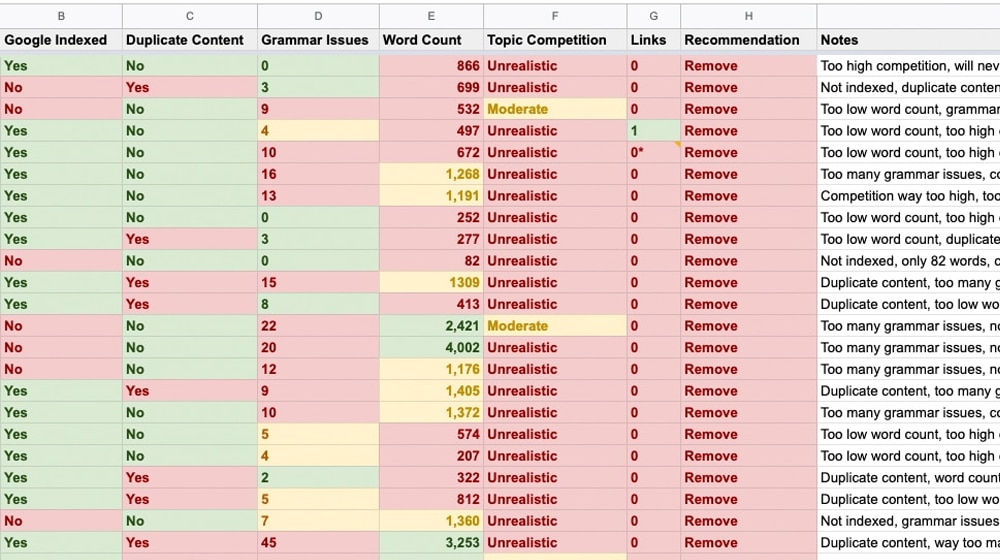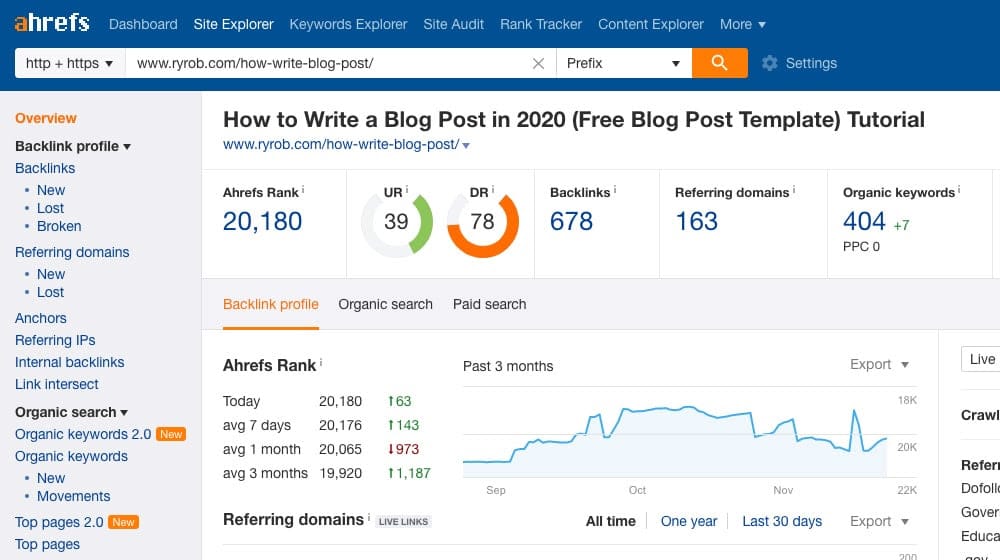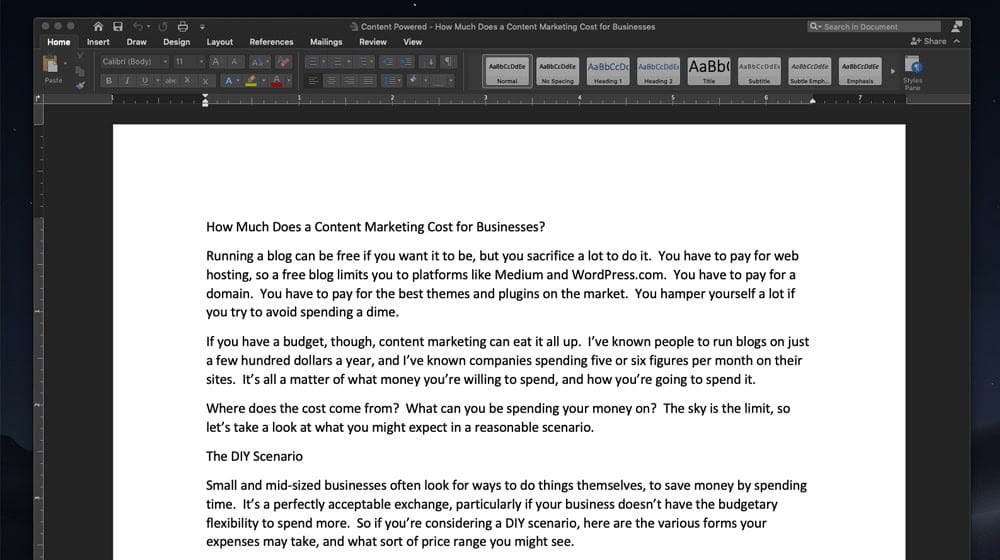What Are Content Gaps and How Do You Find Them?

When working in the content marketing field, it often feels like every single possible thing you could think of has already been covered, often in great detail, by much bigger brands than you. It feels impossible to find something unique to say, let alone a way to compete.
When you dig deeper, though, you might find something. A space, an opening, an opportunity. A gap that you can fill.
These are content gaps, and they're quite possibly the best way to succeed in content marketing. They're also the "holy grail" of content marketers, something everyone is seeking, so how can you find one and utilize it for your own marketing? The process to do so is a content gap analysis. Let's talk about it.
Why Give Up the Secret?
First, you might be skeptical. If a content gap is such a valuable thing, and if my process for finding them works, why would I give it up, let alone for free in a blog post? Wouldn't it be better to use it myself and leave everyone else in the dust? Skeptics might even say that such a method is only worth giving away when it no longer really works.
The truth is, it's fine to "give away the secret" because it's not really a secret. It's just a lot of work. Most people give up before they find more than one gap and might not spend enough time to properly take advantage of it. Those who persist can find great rewards, though.

On top of that, the internet is always in a state of decay. Some evergreen content sticks around, and some gets better over time, particularly when it's a high-end resource run by an enduring brand that keeps it updated. But that's just a small part of the content out there.
Sites change. Structures change, content is left behind, and redirects fail. Site owners move on, sell their sites, or pass away, leaving them to evaporate when the hosting isn't paid for. Formerly-excellent results end up 404s. Others are corrupted by branding from people who buy sites and don't know why the content was doing well. Others just fall out of relevance.
In other words, there are always more opportunities opening up. The content gap mines are endlessly refreshing.
There's also always the opportunity to adjust your standards and produce Even Better Content, driving even further growth. Maybe an incredibly good resource exists already for a topic, but if you make an even better one, you can still poach that spot as long as it's decaying enough to supersede it.
Defining a Content Gap
In order to find content gaps, you first need to know what they are. So, let's define them.
A content gap is an opportunity to cover a topic in a way that meets a need that is currently going unfulfilled.
This might occur for many different reasons.
- It's a new topic so there's very little information available about it. For example, if a new vector of malware emerges, coverage of that topic will be thin on the ground until a cybersecurity authority covers it.
- It's a topic with global coverage but no local coverage. For example, someone might search for pest control with a specific pest insect local to your area and find relatively little coverage relevant to your area, just generic coverage that doesn't quite apply.
- It's a topic with outdated information. For example, whenever Google pushes a significant adjustment to the search algorithm, it can invalidate old strategies; covering those strategies in light of the changes is a gap that can be filled.
- The topic is covered, but the format isn't. For example, there may be a lot of coverage of a topic on YouTube, but no one has made a text-based guide with screenshots for those who don't want to watch a video, or vice versa.
There are also some often-overlooked vectors to find content gaps. For example, one of my favorites is looking at the intent behind the content being produced for a topic.

One keyword might be usable for both DIY/tutorial intent and transactional/purchase intent. Many websites will aim at the transactional intent, hoping to sell the product, leaving a gap in coverage for tutorial intent.
Content gaps can also come in three forms as far as scale goes.
- Personal. These are gaps in your site and your content. Maybe the topics have been covered by others on other domains, but you can still put your own twist on the topic and put your coverage out there. This can also extend to internal documentation, for things like employee onboarding and knowledge base content, but that's not part of content marketing so I'm not going to cover it.
- Local. These are gaps in coverage of a topic for your geographic region. The content may exist on the broader, more generic internet, but there's nothing quite locally relevant. This generally only applies to local SEO-style topics, like the pest control example above.
- Global. These are gaps in coverage of a topic across the board. These have the highest potential value but are the hardest to find because there's vastly more competition for them.
Most typical content marketing is about finding "personal" gaps in coverage and filling them as best you can, but when a personal gap lines up with a global gap, that's when you're really cooking.
How to Find Content Gaps
Internal content gaps stem from one of two things: either you don't have the relevant content, or your organizational structure, site search, and navigation aren't surfacing it. The former is a job for content production, and the latter is for developers, UI/UX, and other teams to evaluate.
Global content gaps are the most important, so they're the ones I'm primarily going to focus on. And, really, if there's a global gap, it means you don't have local content to fill it either, so it's a local gap by definition as well.
Locating content gaps is both harder and potentially easier than you might think. The overall process is very similar to a gap analysis in business. A gap analysis is a multi-step process where you define a goal (in this case, complete topic coverage), analyze your own position, and identify the gap between where you are and where you want to be. It's remarkably similar to what we're doing but framed in a different context.
Step 1: Know Thyself
The first thing you need to do is a thorough content audit. You need to know everything you've put on your site, all of your content, laid out as best you can.

I recommend making a chart. Something that distills your content down into the primary keyword(s) and the intent behind it. There are five kinds of intent (see my guide), but since navigational intent isn't likely to be what you're aiming for, and transactional intent is more likely to be product/service pages than content posts, you can keep it at three. You'll have something like this:
| Keyword/Topic | Informational | Tutorial | Commercial |
| Keyword 1 | X | X | O |
| Keyword 2 | X | O | X |
| Keyword 3 | O | O | X |
If you're particularly detailed, you can also go through and rank each piece of content in terms of how good it is and how likely it is to be a top-ranking post.
If you're worried about covering the same topic with different intents working out to be overlapping content and keyword cannibalization, don't be. Usually, a different intent can dramatically change the focus of a post, even if the keywords are the same, and Google is smart enough to serve them appropriately. Often, broader coverage helps more than avoiding any potential cannibalization.
I recommend a thorough content audit to establish this information. It's easiest to do both at the same time, in any case, since most of the work will be the same.
Step 2: Examine the Market
The first step gives you a nice chart of gaps in coverage on your site. Now you can start looking to see if there is content that fills those gaps elsewhere on the internet.
Generally, this process is simple, but time consuming. 95%+ of people searching for a topic are going to search Google and check the top 1-5 search results, so pulling the top few search results is really all you need to do. There are a thousand different tools you can use for this; I like free scrapers like Greenflare, but really, just use whatever suits you.

There is also a variety of tools you can use to search for content gaps directly. Ahrefs, Ubersuggest, Semrush, and others have features that can give you content recommendations. There are also a lot of generative AI tools that claim to give you ideas as well, though in practice, there's no way they can provide information that wasn't fed into them, so it's nothing the other tools aren't already providing.
In general, what you're looking for is:
- Cases where the content doesn't exist, and you can create it.
- Cases where the content doesn't match the intent, but you have ideas for how to make it do so.
- Cases where existing content exists, but is out of date, and you can make a more updated version.
- Cases where existing content exists but it's terrible, thin, clearly AI-generated, or otherwise worthless, and you can make a better version.
- Cases where the content exists in one format, but not in another, and you can create it in that other format.
These are the gaps you're looking for.
Step 3: Filling the Gaps
Once you've identified potential gaps, you need to fill them.
This is where all of your skill as a content creator comes in. You need to take the gap, and the information you have for where the edges of the gap lie, and use that information to create content.
This post you're reading right now is one such gap-filling piece of content. I realized that I hadn't written anything about content gaps myself, and moreover, the content I found about content gaps was mediocre at best. One post was largely just to promote the author's own tool, one was little more than a glorified definition of content gaps, one went into some details that weren't really relevant and heavily pushed AI as a solution, and nothing really suited the need I had in mind to fill.

Consider the different ways the content you make can be better than what already exists.
- Create something that is more updated and relevant, especially for rapidly evolving topics and industries, than what is already published.
- Create something that is more thorough, more detailed, or deeper than what already exists. If they go shallow and broad, you go narrow and deep.
- Create something with the aim of being more readable and digestible to the average user rather than to specialists.
- Create something that brings the content to a new audience, be it a podcast, infographic, video, or text guide.
- Create something that leverages expert resources and opinions when other content isn't well-sourced or backed up by data.
The goal is the same as with any piece of content you create. You want to make something that fully covers the topic in as much depth and as much breadth as possible without stepping on the toes of other pieces of content you have. Whether that's a narrow guide, an ultimate resource, a piece of media made on a topic otherwise well-covered, or something entirely different is up to the specific circumstance.
The point is, make it good, whatever it is. Ideally, if you've hit a gap well enough, you'll fill a niche that wasn't otherwise filled. You might not immediately rank #1 for related queries simply because some of the less-valuable content has bigger site SEO behind it, but as long as you keep it up to date, you'll gain over time.
And, of course, you can skip this entire process and still gain the benefits. All you need to do is give me a call and let me do it for you.










Comments